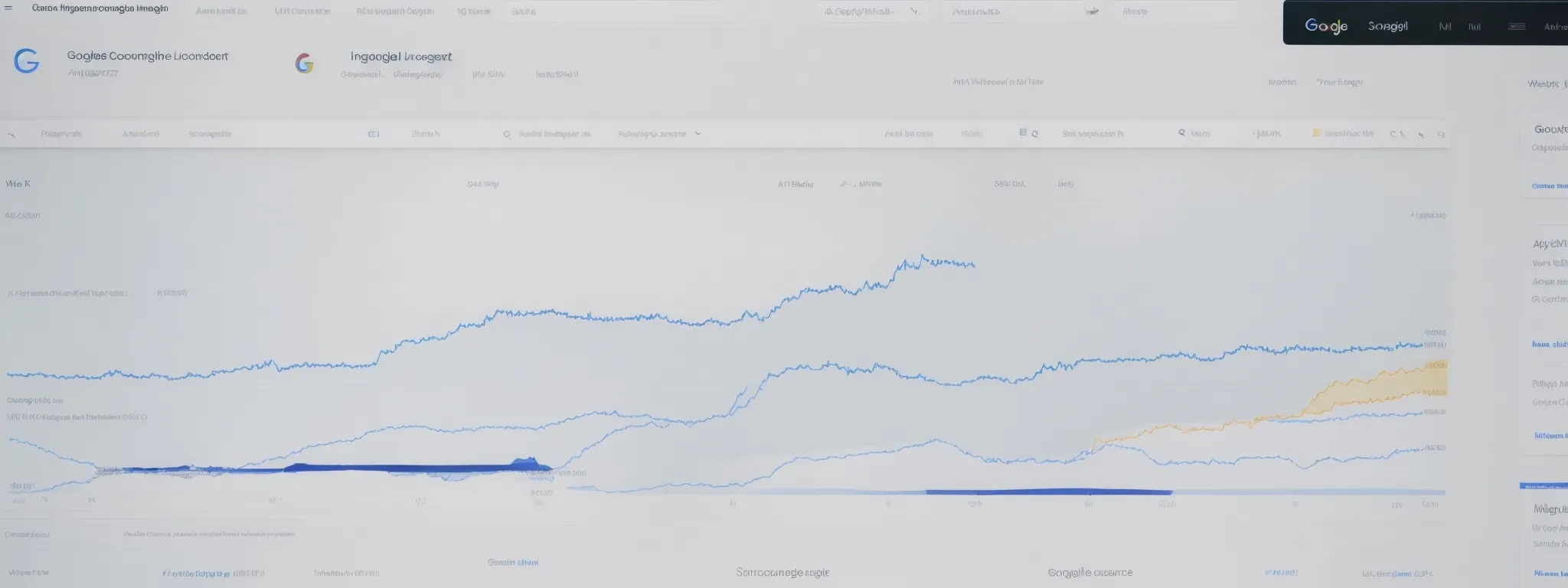How to Implement Hreflang on Your Website
A Step-by-Step Guide to Implementing Hreflang on Your Website Navigating the intricacies of hreflang tags is akin to orchestrating a symphony of language-specific URLs, each harmonized to […]
A Step-by-Step Guide to Implementing Hreflang on Your Website
Navigating the intricacies of hreflang tags is akin to orchestrating a symphony of language-specific URLs, each harmonized to resonate with its intended audience.
The role of hreflang tags in optimizing websites for a global audience is paramount, ensuring that searchers encounter the appropriate content page or product page, tailored to their locale and language preferences.
This strategic implementation not only catapults user experience to new heights but also signals to search engines the relationship between various language versions of a web page.
It is imperative for webmasters and developers alike to master the correct application of these tags to prevent the discord of mixed signals in search results.
Keep reading to unlock a wealth of knowledge on achieving SEO harmony through precise hreflang implementation.
Key Takeaways
- Hreflang Tags Are Essential for Directing Users to the Correct Language Version of a Website and Improving International SEO
- Errors in Hreflang Tag Implementation Can Mislead Search Engines, Necessitating Regular Audits and Validations
- LinkGraph’s SEO Services Ensure Precision in Hreflang Application Across HTML and Non-HTML Content for Optimal Global Reach
- Integration of Hreflang Annotations in XML Sitemaps Enhances a Website’s Content Organization and Search Engine Indexing
- Continuous Monitoring and Updating of Hreflang Tags Are Crucial to Address the Dynamic Nature of Content and Maintain SEO Effectiveness
Understanding the Purpose of Hreflang Tags

The advent of global digital commerce has necessitated the development of sophisticated strategies to cater to an international audience.
The hreflang tag stands as a critical component of this approach, enabling webmasters to guide search engines toward the most relevant version of a website based on the user’s locale and language preferences.
This marker is distinct from other meta tags due to its targeted purpose: to preemptively resolve confusion for search engines and improve the user experience for global visitors.
By accurately implementing hreflang, online entities can effectively clarify their intentions to search engines, thereby ensuring that customers across different regions and language spectrums access the appropriate content page without hindrance.
Clarify the Role of Hreflang in International SEO
Amidst the complexities of international SEO, the hreflang tag plays a pivotal role by streamlining the search experience for global users. It acts as an annotation within the site’s code, enabling search engines to present the most suitable language or regional version of a web page, based on the searcher’s country code and language preferences.
Employing hreflang tags is a best practice that aids search engines like Google in understanding the multi-language or multi-regional nuances of a website. This precise indication of language and locale variations eliminates the risk of content duplication across different language versions, thus optimizing the user experience and bolstering a brand’s global online presence.
Differentiate Hreflang From Other Meta Tags
Meta tags typically offer search engines a compendium of information about a webpage’s content, ranging from the page description to its relation to a website’s hierarchy. However, the hreflang tag is uniquely architected to communicate specific language and regional directives; it instructs search engines on which version of content is appropriate for a user, based on their geographic and linguistic context.
Whereas standard meta tags operate more broadly on content relevance and site indexing, the hreflang tag narrows its focus to the user’s locale, avoiding the common pitfalls of misdirected search results. Its specificity stands in contrast with other HTML attributes like the ‘description’ or ‘keywords’ meta tags, which aim to optimize visibility rather than guiding linguistic localization:
| Meta Tag Type | Purpose | Impact on User Experience |
|---|---|---|
| Description | Summarize page content | Provides a snapshot of page content in search results, influencing click-through rates. |
| Keywords | Highlight relevant topics | Historically used to determine content’s relevancy to search queries. |
| Hreflang | Indicate language & region variants | Ensures users receive content in their preferred language and locale, elevating content accuracy and user satisfaction. |
Planning Your Hreflang Tag Strategy

Embarking on the voyage of international SEO requires a meticulous blueprint that acknowledges the diverse linguistic and geographical landscape of a brand’s audience.
A key element in this planning phase is evaluating the necessity for multiple language and region targets.
This step is the cornerstone for constructing an Hreflang tag strategy that can effectively communicate with search engines about the specific content versions intended for varying audiences.
Moreover, curating a deliberate URL structure forms the backbone of a seamless Hreflang implementation, providing a clear, organized path that search engines can follow to deliver the right content to the right users.
Identify Which Languages and Regions You Need to Target
Before diving into the technical intricacies of hreflang implementation, brands must first undertake the task of identifying which languages and regions are pivotal to their business objectives. It involves a thorough analysis of current visitor demographics, market potential, and the strategic importance of specific countries or languages to the business, ensuring no critical market is overlooked.
A precise identification of target markets sets the foundation for an effective International SEO campaign, guiding the selection of appropriate language tags and country codes that align with the linguistic nuances and cultural idiosyncrasies of each designated audience. It’s a step that cannot be bypassed if one intends to optimize engagement with the global customer base.
Structure Your Website’s URL Architecture for Hreflang Implementation
Setting the stage for successful hreflang implementation hinges on the thoughtful design of a website’s URL architecture. An organized and logical URL structure ensures that search engines can effortlessly discern and navigate the various localized versions of a website, a critical step in presenting users with the most relevant content aligned with their geographical and linguistic context.
LinkGraph’s SEO services emphasize the necessity of a clear URL strategy as part of their comprehensive on-page SEO services. In combination with the revolutionary features of their SearchAtlas SEO software, LinkGraph aids businesses in effectively structuring their URLs to support hreflang tags, thus facilitating a stronger international presence online and a refined experience for both visitors and search engines.
Crafting the Correct Hreflang Tags

Delving into the technicalities of international search engine optimization (SEO) necessitates a precise approach to constructing hreflang tags.
It is imperative for businesses to format and build hreflang annotations that effectively communicate website versions tailored to specific linguistic and geographic parameters.
This process, which hinges on standardized ISO language and country codes, ensures search engines can match users with the correct multilingual or multi-regional URL.
Properly crafted hreflang tags are the linchpins in a strategy that offers a localized browsing experience, satisfying both the expectations of global audiences and the demanding criteria of search engine algorithms.
Format Hreflang Tags According to ISO Language and Country Codes
Structuring hreflang tags demands adherence to a precise syntax prescribed by ISO, which includes both language and country codes. This is not a coding free-for-all; rather, developers must utilize two-letter or three-letter language codes, such as ‘en’ for English or ‘de’ for German, paired with optional country codes to differentiate regional dialects, like ‘us’ for the United States or ‘ca’ for Canada.
LinkGraph’s SEO services empower businesses with the technical expertise to ensure their hreflang tags are properly formatted, fostering accurate communication with search engines. Compliant with ISO standards, these tags instruct search engines on delivering the relevant language version of a web page, whether that’s for a Spanish-speaking audience in Argentina with ‘es-ar’, or for French-speaking Canadians with ‘fr-ca’.
Build Hreflang Tags for Multilingual and Multi-Regional URLs
Once the foundational elements of international SEO are established, webmasters must construct hreflang tags that explicitly detail the multi-regional or multilingual facets of their URLs. By doing so, a website communicates to search engines the precise variant of a page intended for users, as determined by their region and language preferences.
LinkGraph’s SEO services provide the technical acumen to build hreflang tags that serve as clear directives to search engines, thereby ensuring content is accurately served to a diverse international audience. The meticulous configuration of hreflang tags is the bedrock of a tailored user journey, contributing to a harmonious interplay between website versions and user expectations:
| Element | Description | Example |
|---|---|---|
| Language Code | An ISO-defined code signifying the language | ‘en’ for English |
| Country Code | An optional ISO-defined code indicating the country or region for region-specific language variations | ‘us’ for the United States, ‘ca’ for Canada |
| URL | The specific page address that corresponds to the designated language and/or region | www.example.com/en-ca for English-speaking Canadians |
Incorporating LinkGraph’s expertise in hreflang implementation, brands can confidently facilitate the user’s journey to the correct language or regional site, solidifying the bond between customer engagement and SEO success. This technical nuance not only enhances user experience but also strengthens global search visibility, a crucial factor for businesses targeting a multilingual customer base.
Incorporating Hreflang Tags in HTML

Embarking on the technical journey of Hreflang implementation is a meticulous process that enhances the international reach of a website.
With its pivotal role in tailoring content to diverse audiences, mastering the integration of Hreflang tags into the HTML fabric of a website becomes indispensable for businesses looking to cater to a global marketplace.
In the following discourse, attention will be concentrated on the methods to accurately insert Hreflang tags in the head section of HTML documents and the intricacies of ensuring proper syntax when multiple Hreflang tags are deployed.
By adhering to these guidelines, webmasters are poised to optimize their sites for an enriching cross-border user experience that aligns with the sophisticated algorithms of today’s search engines.
Insert Hreflang Tags in the Head Section of Your HTML
Integrating hreflang tags into the head section of a website’s HTML is a task of precision, requiring skill and attention to detail. Webmasters are tasked with the inclusion of these annotations above the body of the HTML document, ensuring they are nestled within the proper section so that search engines can readily interpret the signals they convey to serve the appropriate regional or language-specific version of the site.
LinkGraph’s seasoned SEO specialists expertly embed hreflang tags into the HTML header, meticulously attending to each tag to ensure the correct ISO codes are employed. This careful insertion lays the groundwork for search engines to seamlessly navigate the international structure of a website, enhancing the relevance and accessibility of content for users around the globe.
Ensure Proper Syntax for Multiple Hreflang Tags
Ensuring the syntax of multiple hreflang tags is correctly structured is integral to the successful internationalization of a website. Each tag must be formatted to include the rel=”alternate” attribute, followed by the appropriate language and country codes, and the corresponding URL for that specific version.
Errors in hreflang syntax can disrupt the relationship between web pages and their targeted user base, resulting in search engines either ignoring the tags or misdirecting users to the incorrect regional version of the website. Consistency and accuracy in implementing these tags are paramount to uphold the integrity of a site’s international SEO strategy.
- Start with the rel=”alternate” attribute to indicate an alternate version of the webpage.
- Include the correct language code, followed by an optional region code if necessary.
- Correlate each set of codes with the precise URL that reflects the content intended for that audience.
- Verify that each hreflang tag is a direct and accurate reflection of the site’s available language and regional versions.
Using Sitemaps for Hreflang Implementation

Transitioning to the phase of Hreflang implementation via sitemaps, businesses must recognize the amplification of their SEO prowess by embedding these localizing signals within XML sitemaps.
This tactic ensures an elaborate presentation of a website’s diversified content to search engines, marking an advanced milestone in the meticulous orchestration of a global SEO strategy.
Crafting a well-annotated sitemap intertwined with Hreflang annotations lays the foundation for search engines to understand and serve geo-specific versions of content, propelling websites toward superior search visibility and enhanced user connectivity across different regions.
Add Hreflang Annotations to Your XML Sitemaps
Integrating hreflang annotations within XML sitemaps represents a critical advancement in the optimization process for multilingual and multi-regional websites. It allows LinkGraph’s SEO services to delineate website content organization efficiently, improving the indexing process for search engines and enhancing the findability of the relevant pages for international audiences.
The precision with which hreflang annotations are added to XML sitemaps can significantly impact a site’s SEO performance and user experience. Therefore, LinkGraph’s meticulous approach includes a careful pairing of URLs with the corresponding language and region codes:
- Assigning the appropriate ISO language and region codes to each URL in the sitemap.
- Incorporating the ‘hreflang’ attribute for the search engines to detect different language versions.
- Ensuring each sitemap entry reflects comprehensive hreflang details for accurate search result targeting.
Validate the Sitemap Format and Update It in Google Search Console
After meticulously adding hreflang annotations to an XML sitemap, it’s essential to validate the code structure to ensure its fidelity and functionality. Without proper validation, errors within the sitemap may hinder search engines’ ability to recognize and process the specified directives: an oversight that could dilute the efficacy of a site’s international SEO efforts.
Following validation, the next imperative step involves updating the sitemap in Google Search Console. This pivotal update serves as a formal introduction of the hreflang-enhanced sitemap to Google, sparking the search engine’s recognition of the website’s targeted international parameters. Only by this critical submission can webmasters rest assured that their multi-regional and multilingual content is primed for optimal search engine consideration and user reach.
| Step | Action | Outcome |
|---|---|---|
| 1 | Validate the XML sitemap format | Ensures error-free hreflang annotations for search engine parsing |
| 2 | Update the sitemap in Google Search Console | Integrates the sitemap within Google’s system for improved content targeting |
Implementing Hreflang Tags With HTTP Headers

In the intricate realm of international SEO, the importance of ensuring content resonates with a global audience extends beyond the borders of traditional HTML pages.
Digital assets such as PDFs, images, and videos also play a pivotal role in engaging an international user base.
To address this, savvy webmasters employ Hreflang tags through HTTP headers, a method tailored expressly for non-HTML files.
This strategic move harmonizes the user experience across various content types, contributing to a cohesive and seamless user journey.
In the following discourse, the focus is on applying Hreflang tags via HTTP headers and conducting thorough tests to verify the precision of this implementation, both of which are instrumental in optimizing a website’s accessibility to a diversified, global audience.
Apply Hreflang Tags to Non-HTML Files via HTTP Headers
Applying Hreflang tags through HTTP headers is a sophisticated technique reserved for digital content existing outside the realm of HTML, such as PDF documents, image files, and video content. It requires the setting of HTTP response headers, a task typically orchestrated by a website’s server, to inject the critical locale- and language-specific directives for search engines.
LinkGraph’s Comprehensive SEO Services encompass the intricate process of Hreflang implementation across various file types, ensuring that every digital asset on a client’s website contributes to the overarching goal of reaching an international audience with localized content. This practice ensures uniformity in user experience, regardless of the content format presented.
Test the HTTP Header Implementation for Accuracy
Testing the accuracy of HTTP header implementation is a crucial final check to ensure that hreflang tags are correctly recognized by search engines. LinkGraph’s suite of SEO services includes comprehensive testing to verify that these tags are properly configured, positioning international content to be served accurately to the intended audience.
With precision at the forefront of their SEO strategy, LinkGraph harnesses advanced tools to simulate search engine crawling. This allows for an in-depth examination of HTTP headers, confirming that each non-HTML file is correctly annotated with the necessary hreflang information for optimal global reach and search relevance.
Checking Your Implementation With SEO Tools

Once hreflang tags are in place, the critical next step is verification to ensure they are functioning correctly and efficiently serving the target audience.
Rigorous examination of tag structure and the detection of any issues are vital to the stability of an international SEO foundation.
This is where sophisticated SEO tools come into play, offering meticulous analysis capabilities.
Brands may use online hreflang validators for a thorough review of their tag structures or depend on comprehensive SEO software for a deeper insight into potential hreflang issues, ensuring their global content strategy remains unerring and impactful.
Use Online Hreflang Validators to Check Tag Structure
Confirming the integrity of hreflang tags is a necessary check on the road to refined international SEO. Online hreflang validators offer a rapid and reliable method for scrutinizing the structure and syntax of these tags to ensure they meet search engine standards and direct users to the correct language versions of a website.
The utilization of these validators functions as a diagnostic tool, highlighting any errors or oversights that could impact how search engines interpret the website’s intent to provide localized content for its international audience:
| Validator Step | Validator Action | Expected Outcome |
|---|---|---|
| Syntax Check | Analyze the hreflang tags for proper ISO code usage | Confirms that tags adhere to search engine requirements |
| Structural Validation | Scrutinize the overall structure and interlinking of hreflang annotations | Ensures cross-referencing is correct, avoiding user misdirection |
Once validated, webmasters can proceed with confidence, knowing that their hreflang tags are poised to deliver a user-centered browsing experience irrespective of a visitor’s locale, solidifying the site’s international SEO strategy.
Leverage SEO Software to Detect Hreflang Issues
Leveraging specialized SEO software is key when optimizing the architecture of a website to appeal to an international audience. Tools like LinkGraph’s SearchAtlas SEO software provide an in-depth analysis, pinpointing any discrepancies within hreflang tags that could potentially confuse search engines and lead to an inferior user experience.
Identifying and resolving hreflang issues early on with robust SEO software ensures that businesses deliver the right content to the right users. LinkGraph offers a comprehensive suite of tools which includes free SEO audit and free backlink analysis, both instrumental in refining hreflang strategies:
- Evaluate the entire range of hreflang tags across a website’s pages.
- Highlight any tags that may contain errors in language or region codes.
- Recommend necessary adjustments to meet international SEO best practices.
Monitoring Hreflang Tags in Google Search Console

Following the intricate process of hreflang tag implementation, it is imperative for businesses to engage in proactive monitoring to maintain the integrity of international SEO.
Google Search Console emerges as an invaluable resource in this context, offering precise insight into how hreflang tags are interpreted by Google’s search engine.
Within this platform, the International Targeting report becomes a focal point for webmasters, providing a comprehensive overview of hreflang utility and effectiveness.
This report is instrumental in identifying any discrepancies that could impact a website’s global search performance and user experience, guiding businesses to swiftly address reported issues and warnings with informed vigilance.
Review the International Targeting Report for Hreflang Errors
Google Search Console grants webmasters the ability to meticulously inspect hreflang tag performance through its International Targeting report. This dedicated section casts light on hreflang errors, empowering website owners with the intelligence needed to pinpoint and rectify issues that could obfuscate accurate content delivery to international audiences.
Through diligent analysis of the report, LinkGraph’s SEO Experts discern the nuances in hreflang tag application, ensuring that each tag conducts its role in steering users to the appropriate language or regional site. This vigilance in monitoring secures a website’s place in search results, aligning with user expectations and search engine guidelines.
Addressing Any Reported Issues and Warnings
Upon reviewing the International Targeting report within Google Search Console, any issues and warnings identified demand immediate attention. LinkGraph’s SEO Team, leveraging their keen expertise, assists businesses in swiftly diagnosing the root causes of hreflang tag challenges, devising strategic solutions to enhance global search performance and user experience.
Corrective actions, spearheaded by LinkGraph’s professional insights, ensure that the intricate nuances of hreflang implementation align perfectly with search engine expectations. This meticulous attention to detail fortifies a website’s international footprint, cementing its standing in relevant search results and bolstering the brand’s global engagement.
Maintaining Hreflang Accuracy on Dynamic Pages

For websites with a dynamic and ever-evolving content landscape, maintaining the precision of hreflang tags presents its own set of challenges.
These tags must adapt in real-time to reflect the fluid nature of constantly generated pages, ensuring that the global audience consistently receives content in their language and region of choice.
In this regard, setting up hreflang tags on dynamically generated content and instituting regular audits to verify their effectiveness are foundational practices.
They safeguard against the issues of obsolescence and misdirection, securing the relevance of each user’s experience across the full expanse of a website’s offerings.
Set Up Hreflang Tags for Dynamically Generated Content
When dealing with websites that feature a plethora of content types such as dynamic product pages, the implementation of hreflang tags must be agile enough to adapt to content as it is created or updated. This means integrating a system where hreflang tags are dynamically assigned in alignment with the ever-changing content, allowing LinkGraph’s SEO services to assure content’s approachability and relevance for a diverse global audience.
LinkGraph Experts recognize the fluidity of dynamic websites and advocate for an automated mechanism imbued within a site’s backend. Such precision ensures that new pages inherit the accurate hreflang tags corresponding to the predetermined language and region codes, hence maintaining a consistently optimized international SEO posture across all fronts of a digital presence.
Regularly Audit Dynamic Pages for Hreflang Effectiveness
Ensuring hreflang tags retain their efficacy is especially pivotal on dynamic pages, where content is frequently refreshed or personalized for users. To uphold the integrity of such a nimble environment, LinkGraph’s SEO services include regular audits, a process instrumental in detecting and correcting discrepancies that could otherwise hinder the targeted delivery of locale-specific pages.
LinkGraph’s team of SEO specialists employs state-of-the-art tools to periodically scrutinize dynamic pages, assessing whether the hreflang tags are functioning as intended. Through this rigorous evaluation, the team ensures that as new pages emerge or existing ones evolve, every single one continues to provide users with the most relevant language and region-specific content.
Potential Pitfalls and How to Avoid Them

In the intricate process of internationalization, implementing hreflang is essential for crafting a user-centric online presence that resonates with a global audience.
However, even the most diligent webmasters can encounter stumbling blocks that undermine the effectiveness of these locale-adapting tags.
Recognizing common hreflang mistakes and adapting to dynamic website changes are pivotal to safeguarding a seamless international user experience.
This subsection delves into identifying these potential pitfalls and strategic methods to circumvent them, ensuring a robust and search engine-compliant navigation path for all users, regardless of their geographic and linguistic context.
Common Hreflang Mistakes and How to Fix Them
One prevalent hreflang mistake hinges on the incorrect usage of language and region codes. Businesses often fall into the trap of conflating language codes with region codes, or vice versa, leading to the misdirection of search engines and users alike. Through LinkGraph’s SEO services, these vital codes are meticulously assigned to each URL, aligned with ISO standards, thus ensuring the correct version of the site is presented to the international audience.
Another common error is the misplacement of hreflang tags, either within incorrect sections of a webpage or XML sitemap, which hampers their discoverability by search engines. LinkGraph’s seasoned specialists leverage their expertise to embed hreflang tags precisely within the HTML head section or XML sitemap entries, optimizing international search engine visibility and bolstering the accuracy of content targeting for global users.
Keeping Hreflang Tags Updated With Website Changes
As online entities regularly evolve their web presence, ensuring the continuity of hreflang accuracy remains paramount. With each update, addition, or restructuring of a website’s content, LinkGraph’s SEO specialists advocate a simultaneous review and revision of hreflang tags to mirror these changes accurately and maintain international SEO integrity.
Constant vigilance in hreflang tag maintenance allows businesses to uphold a consistent and user-friendly experience across all market segments. LinkGraph not only facilitates the initial hreflang setup but also delivers ongoing support that aligns a website’s dynamic evolution with the multifaceted demands of a global audience.
| Website Change | Action Required | Impact on Hreflang Tags |
|---|---|---|
| New content addition | Review and update hreflang tags | Ensures new pages are accessible in targeted locales |
| Site restructuring | Conduct comprehensive hreflang audit | Guarantees existing tags reflect new site hierarchy |
| Content removal | Remove or adjust hreflang tags accordingly | Prevents user access to non-existent language versions |
Conclusion
The successful implementation of hreflang tags is crucial for businesses aiming to establish a resonant global online presence.
By meticulously following a step-by-step guide, website owners can ensure their content reaches the intended international audience with the correct language and regional settings.
Proper hreflang tag usage prevents common pitfalls like misdirected search results and enhances user experience by serving localized content.
Regular audits and updates of these tags are imperative, particularly for dynamic content, to maintain their effectiveness.
With the strategic implementation and ongoing management of hreflang tags, businesses can optimize their international SEO efforts, ensuring each member of their global audience is presented with the most relevant and accessible content.














































































